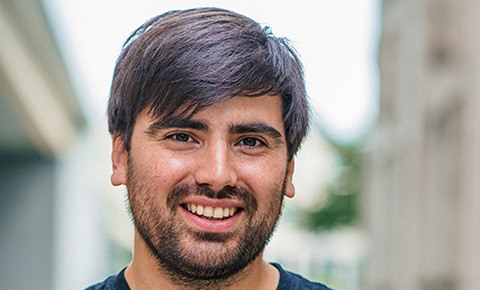Depression and the Transition to Adolescence

The size of a brain structure involved in memory and learning may play a key role in developing depression during the transition to adolescence, according to new Northwestern University research looking at the interaction between the hippocampus and social environments.
The study, published in the journal Proceedings of the National Academies of Sciences, shows that the more conflict with family and peers, and the less positive the school environment, the greater the depressive symptoms in pre-teens. Importantly, “these effects were amplified for youth (ages 9 -11) with a larger left hippocampus,” the researchers said.
Previous work in this area focused on physiological processes or genetic variants. But advances in neuroscience mean researchers can now explore whether some individual brains are more sensitive to environments than others.
The results suggest that people with a larger left hippocampus—meaning they are better able to recall an experience or memory— are more likely to become depressed when in a difficult environment.
“The hippocampus is one of the most plastic regions of the brain,” said study lead author Matías Martinez, a doctoral student in the School of Education and Social Policy’s Human Development and Social Policy program. “It’s very responsive to the environment, especially in a person’s early years. Our findings show that this brain region is playing a role in making youth more sensitive to difficult environments and to the absence of positivity in their life experiences — predicting the development of depressive symptoms.”
In addition to Martinez, the study was co-authored by Claudia Haase and Yang Qu, both associate professors of human development and social policy at the School of Education and Social Policy.

Qu stressed that the findings emphasize how important it is to pay attention to individual differences; some people are more sensitive to social environments than others. “We should never assume that the same environment will have the same impact for everyone,” he said. “There is no one size fits all.”
The researchers analyzed longitudinal data from the Adolescent Brain Cognitive Development (ABCD) study, which follows 11,800 children between the ages of 9 -11 over a 10-year period. The dataset, which is constantly evolving, is the largest long-term examination of brain development and child health in the United States.
The findings underscore that the environment —families, peers and schools— plays an important role in the emergence of depressive symptoms during the transition to adolescence, and how variation in neural structure can amplify or diminish sensitivity to the environment.

“Over the years, the pendulum has swung back and forth between some researchers and practitioners emphasizing the role of nature and others emphasizing the role of nurture,” Haase said. “We have come to really appreciate that we need to look at both and their interplay together.”
The study is titled “Depressive symptoms during the transition to adolescence: Left hippocampal volume as a marker of social context sensitivity.”
It was coauthored by Tianying Cai, a postdoctoral scholar at the University of Minnesota; School of Education and Social Policy graduate student Beiming Yang; Zexi Zhou, a graduate student at the University of Texas, Austin; Stewart Shankman, the Dunbar Professor of Bipolar Disease in the Department of Psychiatry and Behavioral Sciences at Feinberg School of Medicine; and Vijay A. Mittal, the David S. Holmes Professor of Brain Science at Northwestern.
The research was supported by Martinez’s Graduate Research Fellowship from the Institute for Innovations in Development Sciences at Northwestern University; Qu’s National Science Foundation CAREER award; Haase’s Young Investigator Grant from the Brain & Behavior Research Foundation, a National Institute of Mental Health Grant to Shankman and Mittal; and the Center for Culture Brain, Biology and Learning at Northwestern.